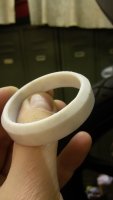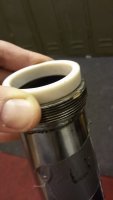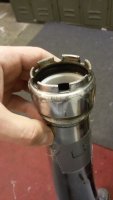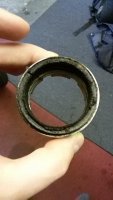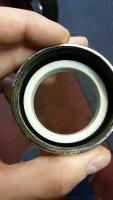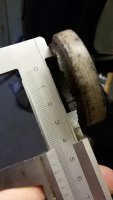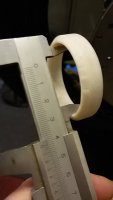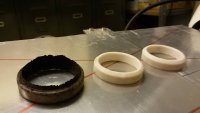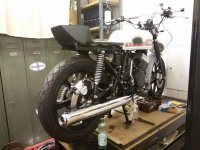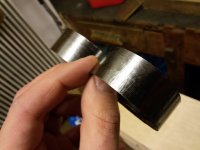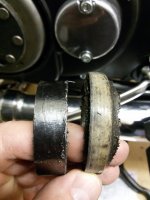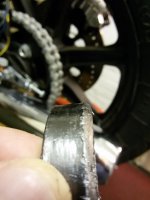The nut slides onto the header pipe first, then the seal slides onto the pipe. Yea, those seals can be pretty tight. They can break too, so be careful. You may want to take a half round file and make a very slight chamfer to help, but you should be able to coax it on without it. Make sure the header pipe is perfectly clean and smooth with no nicks or burrs. The seals work really well, but are a bit fragile and need smooth mating surfaces to work, so check the inside of the nut and end of the muffler where the seal will touch too. Remember, it is only a seal. You can bolt the header pipe to the cylinder, and the muffler to the chassis without the nut and seal, and you will see the two parts are very rigid, even though there is a lot of clearance between the header and muffler. The won't move much at all. The nut and seal are not really intended to bolt the two together, though they do a pretty good job despite that. You should trial thread the nut on the muffler before hand to make sure it starts easy and threads smoothly, because on the bike, occasionally they tend to be hard to start and bind up a little once all the parts are in place, so a little "practice" is good to ensure you know it is actually threading on correctly. The nut goes on the header pipe first obviously, then the seal with the taper towards the nut. Sometimes the assembly can be a bit tricky to mount to the bike, so put the header pipe on the cylinder loose (but tight enough to keep the exhaust gasket in place) with the nut and seal already on it. It is a bit of an awkward angle and surprisingly hard to know the nut is aligned correctly sometimes. Slide the muffler into place, and spin the nut onto it with out installing the muffler's mounting bolts. Once you have the nut on three or four turns, bolt up the muffler leaving all the bolts loose. Spin the seal nut all the way on, but not enough to compress the seal. Tighten the header nuts at the cylinder, then tighten the muffler bolts. Wiggle the joint between the header and muffler a bit while tightening the header nuts to make sure it slides inside the muffler without hanging up on it causing misalignment of the header at the cylinder. Lastly tighten the seal nut. Don't over tighten it. You only need to compress the seal enough to keep it from leaking and to stop the nut from backing off. Snug it up and run the bike. If it leaks, tighten a bit more. If over tightened, they can be very hard to disassemble after a lot of miles accumulate.


